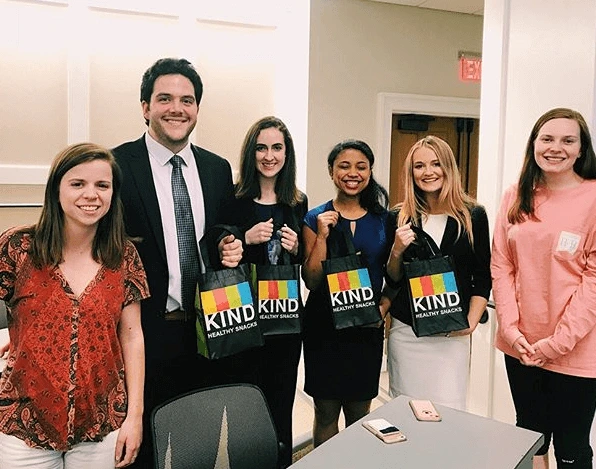Red Flags For CMOs
The signs are obvious. First, big brands began to eliminate the CMO position. It happened at companies ranging from J&J, Coca-Cola and Taco Bell to Uber and Lyft. Others, like PayPal and Unilever, flip-flopped by removing the CMO title, only to reinstate it. To Joanna Seddon, it’s clear that, when it comes to the stature of the marketing role within the C-suite, something has gone wrong.
CEOs don’t trust the Chief Marketing Officer
Joanna cites startling research showing that 80% of CEOs say they do not trust their own chief marketing officer. By contrast, 90% of the same CEOs do trust the counsel and work of their chief financial officer. Joanna’s take is that, in too many organizations, CMOs are not seen as connected to business realities. She warns, “CEOs believe that their marketing officers live in a creative and social media bubble.” They’re focused on likes, tweets, feeds or followers, not the ‘real stuff,’” like the bottom line. As a result, she says, “Our clients are always disappearing.”
It’s a tricky environment for CMOs and unwelcome news for people like Joanna. She’s known as a marketing partner to top brands like P&G, Unilever, Coca-Cola, Bacardi, American Express, Citi, BP UPS, and Google. As CEO and managing partner of brand consultancy Presciant, Joanna has spent years helping organizations build and value their own brands. She has held senior positions at IPG and Ogilvy, was a founding partner at FutureBrand, and created the Brand Z Top 100 Most Valuable Global Brands.
Are CMOs “chasing the shiny object”?
Joanna sees the loss of confidence in the CMO role as a serious situation, but one that marketers can overcome. “Many came out of traditional advertising and failed to link marketing to finance, to demonstrate the impact of what they do on financial outcomes and incomes,” she explains.The problems were compounded when many CMOs didn’t understand how to invest well in digital marketing. The result? Prominent marketers like P&G’s Marc Pritchard admitted publicly that they got too excited about social media and pulled back. Other brands noticed.
On the digital marketing front, some CMOs have been justly accused of “chasing the shiny object.” Instead, they should treat digital media as another channel, and look at marketing beyond advertising, advises Joanna. They need to return to the original premise of marketing, which she defines as “about everything that contributes to driving future sales and profits within the organization through the lens of the customer.”
“Marketing has the most important job in the company today,” she affirms.The good news is that management consultants have already squeezed out efficiencies throughout the company supply chain. According to Joanna, that is played out. “It’s not the future. The future is about growth. Companies that come out of the COVID crisis that are oriented to growth and driving demand through marketing are those that will succeed.”
Want to hear about this from Joanna?
You can register here to access the full series of video conversations for The Future of the CMO: Beyond Changing Roles.
What sets brilliant marketers apart
As co-creator of AMA New York’s Marketing Hall of Fame, Joanna recognizes the very best in global marketing. The CMOs who rise above the rest, in her view, are those who think about marketing holistically and see their job as driving growth. “They have a bigger, broader view of marketing which goes across the whole of the demand chain.”
Another value common to top CMOs is that they understand the customer. Keith Weed (formerly of Unilever) is a good example. “The first thing he did was not to go to the office, but go to where other products were being sold, to hang around and talk to customers.” These marketers also define the customer broadly. For them, the customer is ”everybody who is today in the market for what we sell or who might be touched by what we sell now or in the future…customer as community.”
“Freedom within a framework” was behind Coca-Cola success
Finally, the most visionary and successful CMOs do not think in terms of hierarchy. They are not “command and control” officers; rather they strike a balance between global and local, centralized and decentralized. Joanna notes that Joe Tripodi, the former CMO of Coca-Cola, adopted a principle put forward by former marketing expert (and onetime McDonald’s CMO) Larry Light. That principle is “freedom within a framework,” meaning that you establish what is sacrosanct for the brand, yet allow regional markets the freedom to innovate and improvise.
As global CMO at Coca-Cola, Tripodi was presented with an idea that violated brand guidelines because it meant actually taking the Coca-Cola mark off the can. It started as an experiment in the Australian market. The idea was to put people’s names on the can instead of the logo. It was an idea that definitely broke the rules, but Tripodi recognized its power. Instead of nixing it, he calculated that in a discrete market like Australia, it was worth a try. If it failed, he figured, maybe no one would notice. So Coca-Cola launched it in Australia, and, of course, it was a smash. Seventy-two countries signed up immediately, including the U S, and the rest is marketing history.
Huge opportunities for marketing leaders post-COVID
According to Joanna, some marketers got distracted by social and digital media and neglected the inherent value of a brand. Moreover, the brand value equation was thrown off by the rise of performance marketing, which focuses on things that are quick and easy to measure. ”It’s easy to count clicks. It’s less easy to count brand, but I think there is an increasing recognition that brand value is not just about big ad campaigns,” she explains. “It’s the external expression of business strategy. It is the expression of why a company matters.”
Successful brand marketers during and after the pandemic must react quickly to change, do many things at once (and within constrained budgets), and experiment, test and learn. They must take risks and tolerate failure. This is a time where innovative marketing can rise. ”For years, we’ve talked about being agile, and now people actually have to do it,” Joanna summarizes.
She sees huge opportunities for CMOs in the growing acceptance that brands offer tangible monetary value to businesses. Two types of intangible assets now account for over 80% of company value. One is IP. The other is brand. And the financial markets have noticed.
Racial and social inequities raise the bar for brands
Finally, marketers who succeed will do well to live the values of their brand. Joanna sees higher expectations of brands and brand marketing since protests swept the country in the summer of 2020. She predicts that there will be no more tolerance for companies that do not live their own values. “There is no patience for companies who just mouth platitudes, who do not put their actions where their words are,” she asserts. “Companies are judged by a higher standard than in the past, and that includes how they treat employees and communities, how they think about health, how they deal with diversity and inclusion, and how they are authentic in what they say and what they do.”
You can register here to access the full series of video conversations for The Future of the CMO: Beyond Changing Roles.
Dorothy Crenshaw is CEO of Crenshaw Communications, a B2B public relations and content agency specializing in high-growth technology businesses. She chairs the AMA New York PR committee.


















